CIRCLEMAKERS CLAIM FOR AVEBURY FORMATION July 1999.
ANTESCRIPT:
Since writing this article I have been contacted by one of the Circlemakers and given details of the event, farmer's name address and phone number. The farmer has confirmed that CM made the circle.
CM have explained that the diagrams used are schematics, and the final formation may differ. If this is accepted,, the discrepancies can be explained.
They have also explained how they made the detailed parts of the formation, using their method. I am satisfied that CM did make the circle.
This article is thus rendered largely academic. Either my Conclusion 1 applies, or Conclusion 4 applies. I leave it to the reader to judge... I am leaving the article unchanged, for the record.
For another viewpoint, see also Lucy Pringle's site http://www.lucypringle.co.uk/articles/avebury99/
-------------------------------------------------------------------------------------------------------------------------------------------------
On their website www.circlemakers.org CM claim they made this formation below.
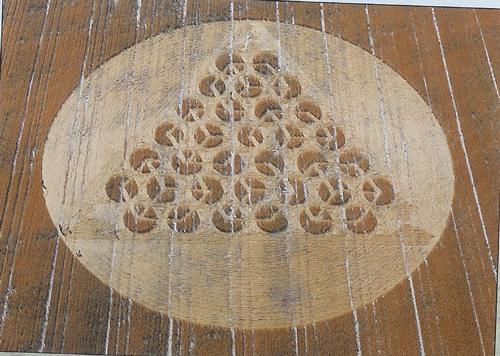
I want to examine this claim.
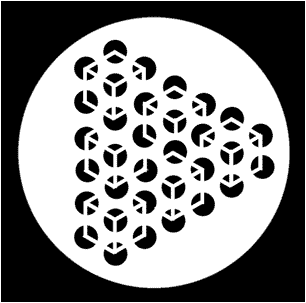
This is the
Circlemakers
diagram of the formation.
First point: - this diagram is
wrong
. The most obvious thing is that the outer circle should be much larger. You will see how wrong in detail below when I analyse it properly.
Then they show how to construct it:.....
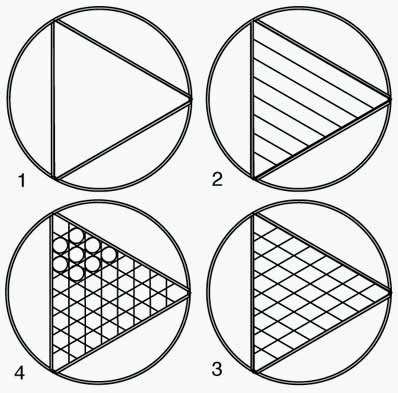
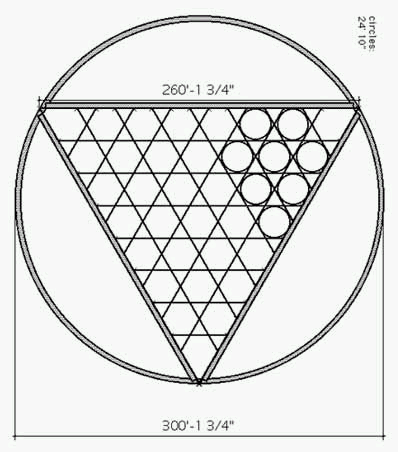
This is how they say it was laid out.. Actually these diagrams don't even match the top diagram, Look where the main triangle meets the circle, it's in a different place. They show lines marking out the
edges
of circles, 1 to 4. This a
very strange
way to set out circles. You really need to mark the
centre points
, not the edges. Especially since you have to mark out the straight lines which form the
corners
of the 'cubes' in the actual formation. To mark out the grid along the main edges, they have to measure
uneven spacings
. (ie. one long, one short, one long, etc) They have to very careful at the
intersections
of the lines as any inaccuracy will be difficult to check, the lines don't meet at points, they form small
triangles
. Having made this rather complicated grid of triangles, they still need to mark the
centres
for the circles, and
lines
for the cube corners.. Or do they somehow
round off the hexagons
into circles. If so how? Anyway they still have to form the cubes, So now they would have to lay
yet another triangular gri
d over the whole area, to set out the centres of each circle and the cube lines. Something like this:
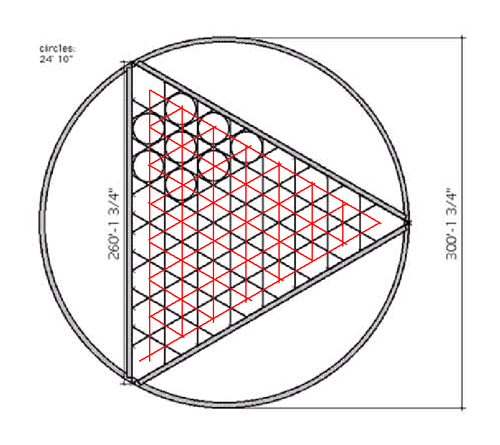
Why go to all this trouble?
This is how it could be done using common sense: (It's a rough diagram, but it makes the point)
Set up the big circle from the central red dot, mark the 3 points on the circumference, (using pre-cut string) divide each side into 7 segments, walking carefully through the crop so as not to leave traces, using metal rods to mark the spots, then join up the rods with string. The strings will form a nice grid over the top of the corn, with neat intersections so you can check that all is ok.
Then strike each smaller standing circle, taking care to walk carefully to the centre point with out disturbing the crop too much, Or use a long rod with a drop on the end. to make a centre point. Flatten the straight line bits to form the corners of the cubes. So overall it's theoretically quite simple, doing it
this way
.
BUT - just a minute -
This diagram is still wrong
. Because it is based on the
Circlemakers'
drawing.
The
actual
circle and the REAL diagram are down below ....
Read on...
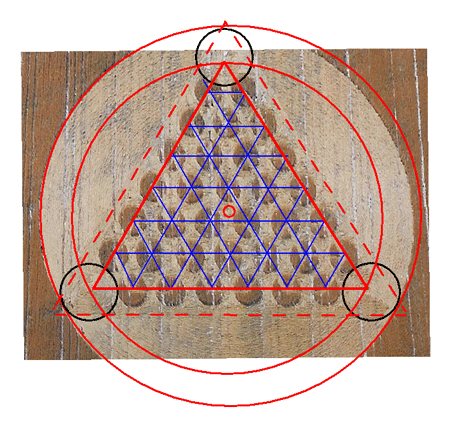
This is my "
real diagram".
(Please excuse the slight distortion of the circle, the photo is taken from the low angle shot and adjusted in Photoshop, mot perfectly , but good enough for this exercise)
This would be
very easy
to make: 1. Mark out the inner red circle. Then mark out the red triangle, then the blue lines. Naturally take care not to disturb the standing crop in the circles visibly, or use a drop rod as above. Since the blue lines cross at points it's really
easy
to
check that everything lines up
. Then strike the circles and finish off. There are other ways, but this looks the simplest.
Apart from their method being bizarrely convoluted, where do the CM
diagrams
go wrong?
1: The size of the
main circle
in the Circlemakers' diagram is
completely
wrong.
2: Note the
3 black circles,
which are formed in the
ground lay only
. (They are double the size of the small standing circles.) The Circlemakers' diagram
misses them completel
y. as part of the design.
3: The dotted red lines are
ground lay
.'avenues' around the triangle.
Also missed completely
in the CM diagram
4: The CM diagram shows the large triangle in the circle as a starting point.. This is a triangle supposed to line up the outer edges of the small circles. The points of their triangle don't even meet up at the main circle, which would be rather hard to set out on the ground. And this triangle corresponds to
nothing
on the actual .formation .
5. The CM diagrams don't
match
each other.
CONCLUSION
I dont know who made this circle. I am just saying that the Circlemakers have gone public and published diagrams which appear to be firstly rather
useles
s for making this
very simple
circle, and secondly
wrong
. . The actual formation contains
subtleties
which the Circlemakers have missed. So, there are three possibilities:
1. They did make the circle, but have somehow published "incorrect" diagrams by mistake? A grave error? *
2. They did make the circle but in an extraordinarily convoluted and difficult way which would take many hours to set out accurately. And they still published incorrect diagrams which don't relate to the actual design. Also a grave error, which stretches one's credibility.
3. They didn't make the circle, and invented the diagrams, but have got it hopelessly wrong.
4. Or, I have totally missed some point.
Circlemakers, over to you.
September 2006
Postscript: "Looks like they had another go!`` Broad Hinton Wilts, July 2003
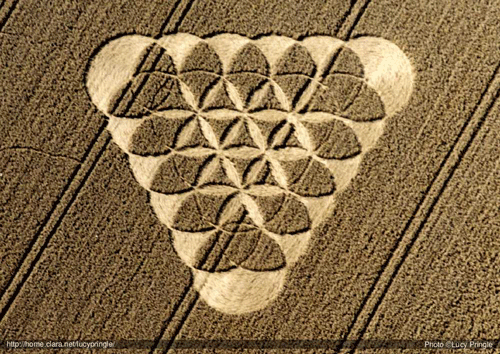
Acknowledgments to Lucy Pringle http://www.lucypringle.co.uk/photos/2003/uk2003co.shtml